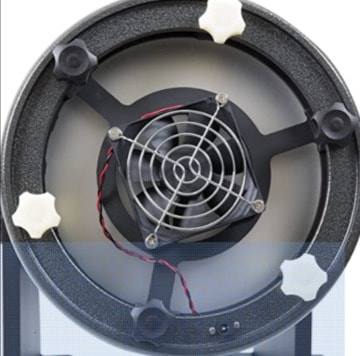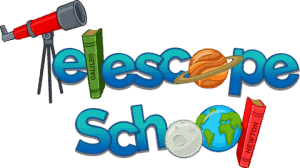I remember as a kid wondering why telescopes use different names for different things. Well, some of it has to do with being invented in Europe, but when you dig into it, it does make sense to call it an aperture.
A Telescope Aperture: Is the diameter of the light allowing lens or mirror. Example; a 100mm telescope could have a diameter tube of 115mm, but the lens, or opening that allows light is only 100mm.
OK, let’s find out the differences in the styles of telescopes and what size aperture makes the best telescope for you.
What is a Telescope Aperture
Webster puts it this way…
1. an opening or open space a HOLE
2. or,
a. The opening in a photographic lens that admits the light
b. the diameter of the stop in an optical system that determines the diameter of the bundle of rays traversing the instrument
c. the diameter of the objective lens or mirror of a telescope
Ah-ha, we will take 2C, ironically, “to see” with a telescope you need all of the above definitions to answer the true question of “what is an aperture on a telescope.”
A telescope has an opening or a hole (depending on the style) that allows light to enter the tube.
Then it is bundled to a point where the eyepiece can magnify the point of light.
So, to sum it up, a telescope aperture is: the diameter of the light allowing lens or mirror.
How to Figure The Best Size Aperture?
On a telescope, it is the bigger, the better. There is no one best size. However, there are some things to consider with the different types.
Why do you think NASA keeps building bigger telescopes as technology makes them affordable. An actual case of “bigger is better.”
Telescope Size Scenario
Let’s say you are thinking of buying a telescope. You hear that you should buy at least a 70mm and an 80mm or 90mm would be better. You think I am going to treat myself to the best 90mm I can afford.
You start your research and start seeing that reflectors of 114mm go for less or the same price as a 90mm refractor.
Here is what is important to you; the reflector style has an obstruction. The obstruction is the secondary mirror and brackets that hold it in place. This obstruction blocks the light entering into the telescope tube on its way to the primary mirror.
You can calculate the area of the aperture of a refractor, then compare it by calculating the area of the primary mirror on a reflector and subtracting the secondary mirror, plus 10% for the bracket holding the secondary mirror.
So, it would look like: (Prime Mirror area)– ((second mirror area) x 1.10)
Aperture Rule of Thumb
So, a good rule of thumb is that you can add or subtract 25mm to compare sizes quickly. For example, a 90mm refractor and a 114mm reflector would be comparable with the amount of light. If they were the same price, I would go with the less maintenance needed 90mm refractor scope in this case.
You can see using the rule of thumb method can be harsh on smaller sizes. It is a generalistic method to quickly compare. Here is another telescope rule of thumb; What is the 50X rule for a Telescope
But so much goes into choosing a good telescope. You should try these articles if you are still in choosing the right telescope mode.
How To Choose The Best Telescope for a Beginner
What to Look For When Buying a Used Telescope
There is, however, the best size to avoid with a telescope. Let’s touch on that next.
What Size is Too Small for a Telescope Aperture
Anything under 70mm is typically too small to allow enough light in and magnify it to see. Basically, anything under 70mm is only suitable for the moon.
I typically recommend binoculars in this scenario. Utilizing both eyes enhances the ability to see when using binoculars.
See the binocular article The Top 10 Space Things to See with Binoculars.
Is There An Aperture That Is Too Big?
Why I did mention above that the bigger the better, there is a time where size can become too big.
Besides cost, gravity can become your enemy. For most of us, we do not have to worry about it because we aren’t going to spend a million-plus dollars on a telescope.
The cost associated with fighting gravity can make your structure and or mirror not worth the effort.
How Does Temperature Effect Aperture Size
Also, temperature changes can take time to neutralize in a large lens or mirror. Temperature can cause distortions in your viewing. By not allowing the lens or mirror to find ambient temp, there can be distortions in the glass.
Say it is cooler outside than where you had stored your telescope. The inside of the lens is trying to expand while the outside is compressing. This difference can cause a slight change in alignment and ability to focus or just an aberration
A typical average telescope can cool down and become at one with the ambient temperature in about 30 minutes. The larger scopes can take an hour or more.
Of course, the actual time (if you ever had thermal dynamics?) can depend on the difference in temperature, moisture in the air, air movement, and the mass of the lens or mirror. Plus, the surface area for dissipation.
This is why some manufacturers put fans on their mirrors to help speed the process.
Other Related Questions
What Telescope is Easier to Setup? – Well, a refractor style on an Alt-Az mount is the easiest to set up. The lens or lenses are set and require no adjusting. The Alt-Az mount is like a camera stand with pan and tilt. This mount is why they are great for kids’ first telescope. Check these articles out for more. What is a refractor telescope, what is an Alt-Azimuth mount?
Why Do They Use Millimeters to Measure Telescopes? – Telescopes were primarily invented in Europe, but also, it is easier to calculate the numbers like magnification, and F/Stop when using millimeters. This article explains a little more detail. What Does The “mm” Mean on My Eyepiece?
What Size Telescope Do you Need To See Saturn’s Rings? – A good 70mm aperture telescope and a good 13mm eyepiece will give you a 50X magnification. Most people agree that at 50 times mag, you can see the rings of Saturn as separate discs. See the article on equations to know for your telescope for access to a calculator too.
Need More?
I hope you got something out of this article and look forward to seeing you on more. Here are some of the articles that I think will benefit you.
What The F Ratio Means in Telescope Talk
Magnification and Where Does It Get Blurry
With backyard astronomy experience and an BS in engineering, Will Montgomery breaks down telescope aperture — and how to choose the best size for what you love to observe.


